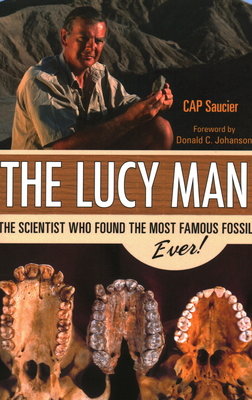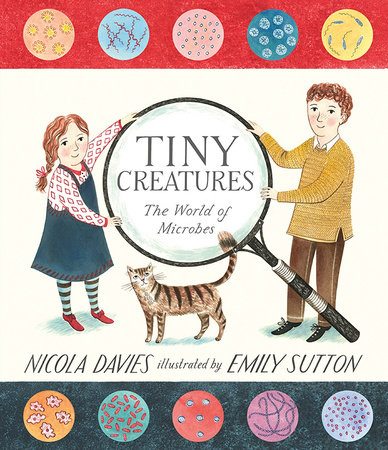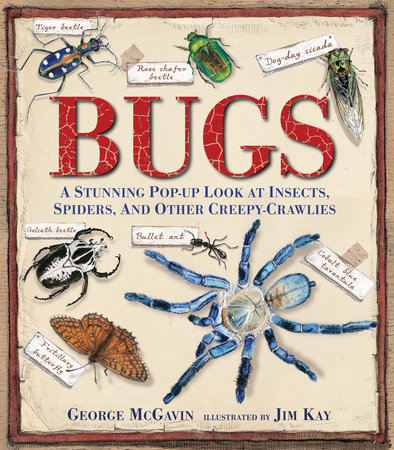5 Awe-Inspiring Books and Learning Activities for Budding Scientists
by Devon A. Corneal
From outer space to top-secret gadgets to ancient human fossils to invisible creatures, here are seven books to get your young scientist exploring, discovering, and engineering. We’ve also included a paired activity for each book to make it a truly hands-on learning experience! Who knew something educational could be so much fun?
-
Explore the Cosmos like Neil deGrasse Tyson: A Space Science Journey
Catch the thrill of the cosmos and space science through the life of popular astrophysicist Neil deGrasse Tyson. This book interweaves up-to-date information about the universe and the science of astrophysics with a biographical portrait of the famous astrophysicist. Illustrated with striking images from the Hubble Space Telescope, the story of one man's successful career in space science may inspire kids to follow a similar path. As Tyson makes clear, there is still much to do for future space scientists: diverting asteroids, unraveling the mystery of dark matter, finding life elsewhere in the universe, and more!
Activity: Moon Journal
Each evening for one month, go outside and find the moon in the sky. Sketch the shape of the moon as you observe it on a calendar for each day, and track how the moon waxes and wanes as the month progresses.
-
Nick and Tesla's High-Voltage Danger Lab
Nick and Tesla are bright 11-year-old siblings with a knack for science, electronics, and getting into trouble. When their parents mysteriously vanish, they’re sent to live with their Uncle Newt, a brilliant inventor who engineers top-secret gadgets for a classified government agency. It’s not long before Nick and Tesla are embarking on adventures of their own — engineering all kinds of outrageous MacGyverish contraptions to save their skin: 9-volt burglar alarms, electromagnets, mobile tracking devices, and more. Readers are invited to join in the fun as each story contains instructions and blueprints for five different projects.
Activity: Low-Tech (And Practically No-Tech) Bottle Rocket and Launcher
Check out page 36 of the book to find instructions for a low-tech bottle rocket and launcher. Or if you’re a more visual learner, the authors have generously provided a step-by-step video here. Once you’ve put it all together, you’re ready to head outside where the real fun begins!
-
The Lucy Man: The Scientist Who Found the Most Famous Fossil Ever!
This revealing biography describes the remarkable life and career of Donald Johanson, the anthropologist who discovered "Lucy" in 1974, the first skeleton of an upright-walking human ancestor. This book presents details of the scientist’s work, not just in regard to Lucy, but also to other significant fossil finds, with up-to-date information on the most recent discoveries.
Beautifully illustrated with numerous photographs of the anthropologist at every stage of his illustrious career, this book will teach young readers about the fascinating study of human evolution and inspire them to make the next great discovery.
Activity: Make Your Own Fossils
Mix together 1 cup of flour; 1 cup of wet, used coffee grounds; 1/2 cup of cold coffee; and 1/2 cup of salt. Divide the dough into even pieces and place on waxed or parchment paper. Collect specimens from your yard or neighborhood, like leaves, flower petals, twigs, pinecones, and bark. Gently press the specimens into the dough and lift them out carefully to leave an impression. Set the fossils out to dry overnight.
-
Tiny Creatures: The World of Microbes
Ever wonder how bread rises? Or why mold grows? Or why we get sick? It’s all because of microbes — creatures invisible to the naked eye, but vital to ensuring the world works the way it should. In Tiny Creatures, Nicola Davies introduces children to "the invisible transformers of our world — the tiniest lives doing some of the biggest jobs." From viruses to bacteria, you can’t see these workhorses, but they’re all around us.
Activity: You’ll Get A Rise Out of Yeast
You’ll need a packet of yeast, 1/4 cup of warm water, 1 teaspoon of sugar, a medium sized bowl, and a spoon. Open the packet of yeast and take a look. Just a bunch of boring brown bits, right? Pour the yeast into the bowl. Add water and sugar. Mix once. Wait about ten minutes. If you see bubbles on the top of the bowl that’s carbon dioxide created by those brown bits of yeast eating the sugar. Now try it again, using cold water and then again with hot water. Compare what happens. If you’re ready for something more complicated, try this experiment next.
-
Bugs
Available from:There’s nothing more interesting to kids than the creeping, crawling, flying, inching, slimy, crunchy bugs all around us. If you have a budding entomologist in your home, Bugs and Bugs by the Numbers by Sharon Werner will provide them with an amazing introduction to the world of arthropods. Bugs is a glorious pop-up book crammed full of information about insects, arachnids, crustaceans, and myriapods (just think wormy things). Bugs by the Numbers incorporates extraordinary illustrations of bugs using nothing but numbers, which in turn provide kids with additional information about everything from flies to bees to mosquitos and worms. Elementary school readers will be enthralled.
Activity: Going on a Bug Hunt
Create a bug habitat from a Mason jar or clear container with a tight lid. Punch small holes in the top for air and place twigs, grass, leaves and/or flowers in the container. Grab your container, a magnifying glass, and a journal and head outside. See how many bugs you can find and examine. Look for fireflies in the evening, worms on a rainy day, and spider webs in the bushes. Describe and draw what you see in your journal. Put several specimens carefully into your habitat and see how they live, but make sure to release them at the end of the day! The best part of a bug hunt? You can do it all over again tomorrow!
Also available from:
Looking for more great books on science? Check out the National Science Teachers Association website for a list of additional titles.





